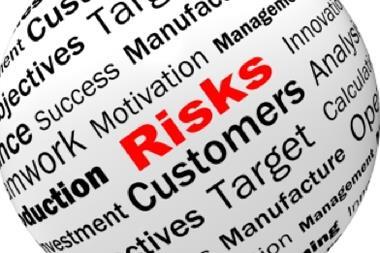Eberhard Faller, senior vice president, corporate insurance at BASF, outlines the threats and opportunities facing the insurance industry

What are the main threats to today’s insurance business model?
On the one hand, it’s the well-known external factors: a challenging macroeconomic environment with reduced GDP growth perspectives and the low or zero percent interest rate environment. Especially the interest rate landscape is here to stay for a longer period of time. Another ingredient for a bleak outlook are the geopolitical risks: growing imbalances in income and wealth distribution appear to have triggered a whole wave of political, religious and individually driven aggressions.
On the other side, industry specific factors start in their modest form to impact today’s business models: these are firstly new market entrants with “traditional” approaches. Increasingly important are “modern” players with totally new distribution channels based on state-of-the-art IT systems that simply start a new business without having to defend an existing business model. So we need to ask the question, if tomorrow’s bank branch supposedly will be our smart phone – does that suggest our insurance model of today remains totally unchallenged? Certainly not!
How innovative is the insurance industry and what are the barriers for innovation?
Right now the insurance industry – and rightfully so – responds first with the fire extinguisher, i.e. cost and headcount reductions coupled with significant IT investments, to the numerous structural changes. The shift to a more forward looking and abstract risk prevention – to stay in the picture - is yet to come and requires a healthy business first. I am impressed by the decisiveness and boldness of insurers’ approaches as far as we can read in published material. The industry has always progressed more evolutionary but regularly shed its skin. A strong insurance industry is key in a macro- and microeconomic sense to enable investments and hence growth in any economy.
Barriers to innovation are principally a real short period of protection when introducing new products as they can be adopted by competitors in the absence of IP protection for insurance contracts. Hence significant investments have literally no adequate time for pay-backs. In view of the foreseeable digitalisation legacy IT systems are the biggest obstacle. A complete new installation instead of a complete rebuilt is a risky investment and from a management perspective a high operational risk and hence not palatable.
Many surveys have highlighted that the top risks for risk managers are increasingly shifting towards intangible risks such as cyber, reputation damage and supply chain. How can the insurance industry remain relevant in a world where risks that matter most to corporates are also the ones that are hardest to insure?
This question is exactly at the heart of the issue. We already see the trend you are describing in all macroeconomic studies where non-life insurance premiums on average and globally are falling as a percentage of GDP. This means especially in developed markets this effect is even more prevalent. Insurance penetration of life products follows slightly different patterns.
If we speak of “old” and “new” industry, the latter is clearly grounded much more on what I call “soft assets”, like Intellectual Property and Market Reputation. In the almost complete absence of relevant insurance products, these companies have no choice but to reserve in the abstract risk capital from their own funds. Likewise, more and more business models separate the ownership of assets from handling the business. This implicates increasingly complex liability structures that sometimes are not insurable. Also in this respect, enterprises have no choice but to consider available own funds as a risk buffer, a factor that obviously reduces their risk bearing capacity otherwise. Consequently, the growth potential for commercial insurance is given. In the past, any new product took a rather long time to ultimately mature to a liquid market at attractive premium rates. I am also optimistic in these newer cases.
What are the top three most impactful changes you expect for the insurance industry in the next five years?
The main changing force will be a consolidation wave in the insurance sector to achieve in each case the critical scale for the considerable IT investments to come. Secondly, the general digitalisation move pushing today’s business models into the Industry 4.0 age will also heavily impact the insurance sector. Finally, in the fight for talent the insurance industry has to increase efforts by relabeling the insurance brand to remain attractive for new entrants.
What will be the main areas for future growth for the insurance industry?
The insurance industry should first of all safeguard and then further strengthen the existing and solid lines of classical business. This means restructuring the offering of classical products by for example providing “bundled” capacity (such as Lloyds) for Market Layers and concurrently commoditise Excess Layer and High Excess Layer business by offering standardised capacity at low distribution cost as an instant click model. In terms of new risks, like the mentioned soft assets or new liability coverages, company specific pilot solutions over time will generate marketable products. This is like a tango and requires two cooperating partners: insurers and insureds.




















No comments yet